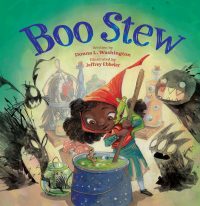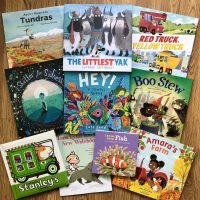Children can enjoy this book for pure entertainment’s sake, but Prince Ribbit can also be a fun exercise in metacognitive reading skills. The phrase “just because it’s in a book doesn’t mean it’s true” is used by multiple characters throughout the story to support their own beliefs—Princess Martha uses it to persuade her sisters to look past their fairy tale stories. Her sisters in turn use that phrase against Princess Martha and her science books. And when a surprise twist repeats the phrase on the very last page, the reader must think about whether that phrase applies to everything he/she just read.
The reader has been seeing (or hearing) the words “just because it’s in a book doesn’t mean it’s true” for 30 pages, but have they actually learned that lesson? This ending forces—even if it’s only for a brief moment—readers to think critically about everything they’ve just read.
They must consider character: Based on what they know of Martha’s character, is she the type of person to marry for looks after he becomes a prince (despite hating the man’s personality when he was a frog)?
They must consider textual evidence: Didn’t the narrator tell us repeatedly that the frog is cunning and sly, that he’d “come up with a plan” to make his dream of being wealthy and well-fed come true? And didn’t the frog devise this plan immediately after hearing the story of The Frog Prince?
The reader is either rewarded for their critical reading at the conclusion of the story OR is reminded in “gotcha!” fashion of the book’s lesson: be critical; you can’t trust everything you read.
A Fuse 8 Production’s Betsy Bird said it best: “With a steady hand and a working brain, a parent, teacher, or librarian could easily spin this book into a lesson that would ultimately do child readers a world of good. Read carefully. Read critically. Read everything and then form your own opinion from the facts, as best as you can gather them. Or, if you just prefer, read this cute book because it has princesses and talking frogs in it. As far as I can tell, that’s a win-win situation.”
You can find Prince Ribbit at your local library, indie bookstore, or Barnes & Noble.














Leave A Comment
You must be logged in to post a comment.